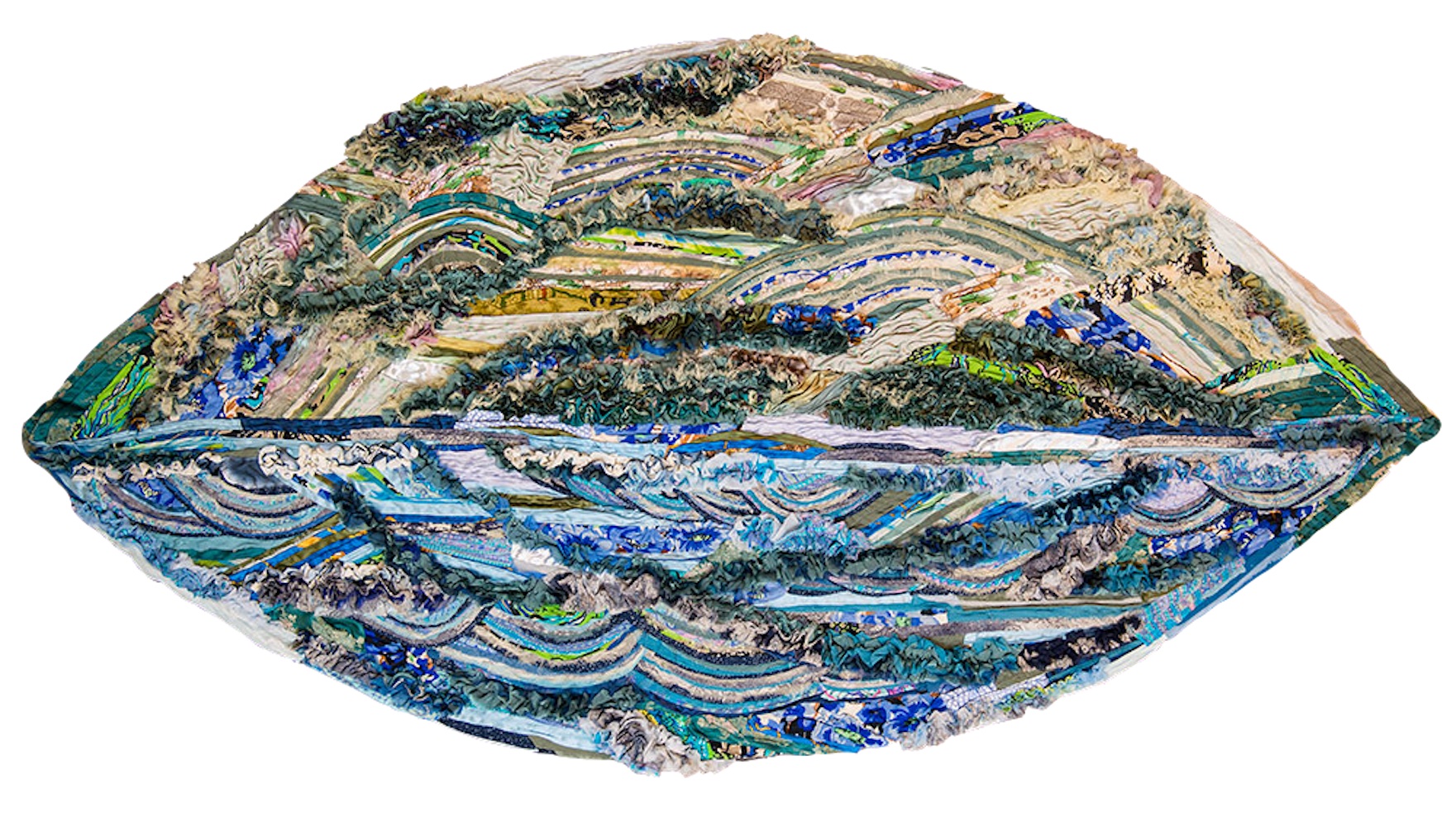Nika Nuova is a textile artist, based in Milan. Her works are abstract textile panels. She has always been in love with textile, its malleability and the wide range of combinations it affords. Having received a classical art education, she began her career as an artist and a fashion designer. That’s how she got the opportunity to combine her two dedications: for drawing and for textiles.
Nika Nuova is a textile artist, based in Milan. Her works are abstract textile panels. She has always been in love with textile, its malleability and the wide range of combinations it affords. Having received a classical art education, she began her career as an artist and a fashion designer. That’s how she got the opportunity to combine her two dedications: for drawing and for textiles.
ARTIST BIO
Nika Nuova is a Milan-based textile artist whose creative journey is deeply intertwined with her love for textiles. From an early stage, she was captivated by the unique qualities of textiles—their malleability, the myriad of possibilities they present, and the tactile pleasure they offer. This fascination led her to pursue a classical art education, where she honed her skills in both drawing and textile art. This dual dedication allowed her to seamlessly merge these two passions as she embarked on her career as an artist and fashion designer. Her early years in the design industry were diverse, encompassing work in fashion, interior design, glass, and porcelain. However, this experience made her realize that product design, while artistic, could never be pure art due to its inherent connection to production. This realization prompted a shift in her focus, leading her to consider the environmental implications of her work more seriously. It was this growing environmental consciousness that eventually inspired her to create wall sculptures, a medium that allowed her to explore artistic expression more freely, unbound by the constraints of industrial production. Nika’s work is characterized by its use of emphatic colors and sharp lines, creating a dynamic interplay between art and pop culture. She is particularly interested in exploring the spaces where these two worlds overlap, crafting pieces that challenge conventional boundaries. Moreover, her commitment to sustainability is evident in her exclusive use of recycled materials, which not only reduces waste but also imbues her work with a deeper emotional resonance. For Nika, each piece is not just a visual experience but also a statement on the possibilities of art in a world increasingly aware of its environmental impact.
ARTIST INTERVIEW
Why did you decide to create textile sculptures?
Textiles have always appealed to me because of their soft texture and, most importantly, their varied textures. As a medium, textiles are unique and inherently expressive. Unlike paints, which are merely tools, textiles carry their own initial information and structure, adding volume and evoking emotions on their own. This inherent quality of textiles is particularly important to me.
Is all abstract art conceptual?
In my opinion, not all abstract art is conceptual. However, I believe this distinction isn’t crucial. There’s a current emphasis on conceptual art that I don’t particularly like, as it can sometimes lead artists astray. Focusing on something as simple as a tree leaf can inspire profound conceptual thoughts, while a complex conceptual art project might merely serve a decorative purpose for someone. This duality is a given in the art world.
What is more important to you: aesthetics or concept?
Both elements are important to me in their own right. I don’t believe everything in art should be categorized strictly. I appreciate aesthetically pleasing art objects, even those imbued with drama, as it adds interest. I find purely conceptual works difficult to grasp, whether they are paintings, installations, or any other form. These pieces can quickly lose their emotional significance if they lack initial aesthetic appeal, and as a result, they may cease to exist as impactful objects.
Do you think that art can be divided into masculine and feminine? If so, how does femininity manifest in your art?
I don’t believe art can be strictly divided into masculine and feminine categories, though different perspectives exist. Just as in literature, where Leo Tolstoy could convey the life of Anna Karenina despite being a man, women can also depict male nature if they choose to.
Regarding my own art, I identify it as feminine. This is evident in everything from my choice of materials to my presentation style. I prefer working with soft, plastic structures and forms to express emotions, while simultaneously asserting myself as an artist. This is where my feminism comes into play.
CV
Maison&Objet Paris 2010, Florence Design Week 2013
100% Design London 2014
Maison&Objet Paris 2015
Maison&Objet Paris 2016
Saatchi Gallery London 2016
Vogue Week Third Edition London 2021
GALERIA AZUR Madrid 2022
Galleria Cael 2023, Artspace Milano, 2023
Unfair. Milan Art Fair . March 2024